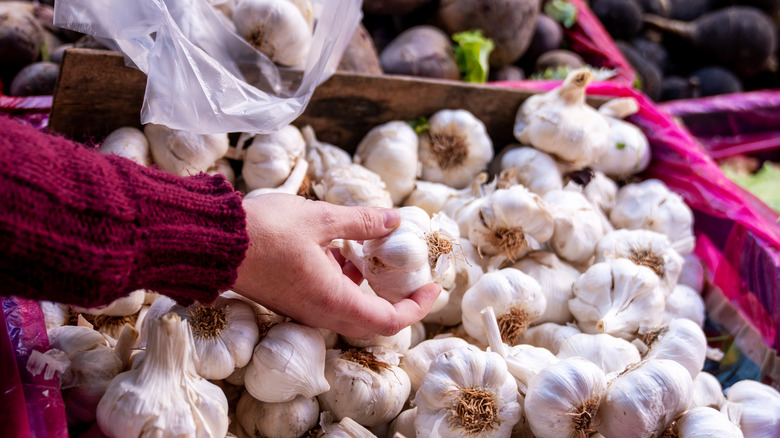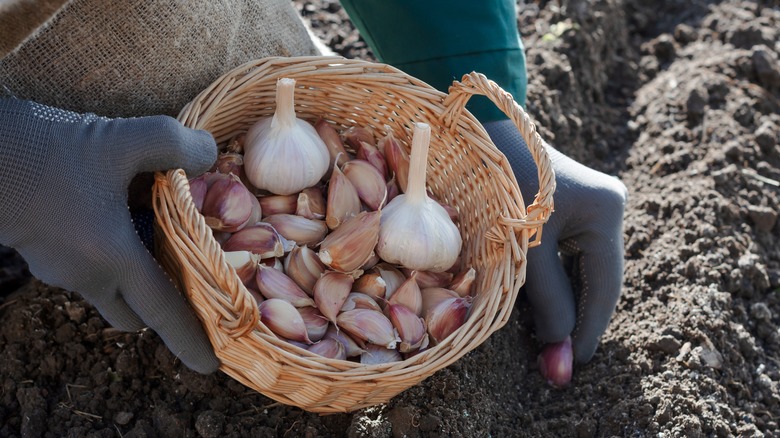Can You Plant Grocery Store Garlic And Grow Your Own?
If you're the type of cook for whom no meal is complete without garlic, join the club; you're not alone. The familiar feeling of dread when you're down to the last few cloves may have you wishing for a never-ending supply of this pungent, bulbous vegetable at the snap of your fingers, because jarred garlic simply doesn't cut it compared to fresh. That begs the question: Instead of buying garlic seeds, which are garlic cloves that are reserved for being planted and grown, can you use conventional, grocery store garlic to curate your home garlic garden instead? The answer is that it depends, and while that may seem like an unsatisfactory response, there's more to the art of growing garlic than the ease with which you can propagate store-bought green onions.
Cutting to the chase, it is possible to grow garlic using cloves from the grocery store as your "seed," but it's probably not the ideal route to guarantee a successful sprout. As opposed to store-bought garlic intended for culinary applications, seed garlic is usually bigger, yielding larger cloves that are better for growing new garlic. Seed garlic is also certified as disease-free, unlike conventional store-bought garlic, so there is an added risk of spreading diseases to other crops in your garden. Imported store-bought garlic may have also been treated with chemicals, handled multiple times, and endured a long journey from farm to store, which may compromise its ability to sprout new garlic cloves. This doesn't mean there's no hope for regrowing store-bought garlic at home. With a few hacks, you might be able to have your garden of guaranteed garlic that originated from the grocery store.
Tips for successful homegrown garlic
If you're feeling ambitious to give growing store-bought garlic a go, you can do so successfully with a few vegetable gardening tips to remember. Try to get as close to the traits of seed garlic as possible. First, choose bulbs that are firm, unblemished, and ideally showing early signs of sprouting to increase your chances of growth. Because organic garlic is less likely to have been treated with chemicals that can hinder sprout growth, consider opting for organic varieties, or better, those available at your local farmer's market. Shopping locally also means the garlic is better suited to grow in your region's conditions. Once you've selected your bulbs, break them apart gently, keeping the skins on each clove. Use the largest cloves to plant and save the smaller ones for your culinary ventures.
Garlic thrives in the sun with well-drained soil. Before planting, enrich the area with compost or aged manure. Plant the cloves with the pointed ends up, about two inches deep. Space them four to six inches apart and ensure that the soil is not too wet or soggy. Remember, using store-bought garlic may introduce pathogens to other plants in your garden. To avoid that, grow them in individual pots and minimize disease risk. If you use hardneck varieties, they may sprout curly green shoots called garlic scapes which you can cook with after trimming.
As is the case with gardening, patience is key. Garlic typically takes around nine months to mature. You'll know the cloves are ready for harvest when the leaves begin to turn yellow. Since seed garlic can be expensive and more difficult to find during colder seasons, grocery store garlic can be an effective way to ensure a guaranteed supply all year.

